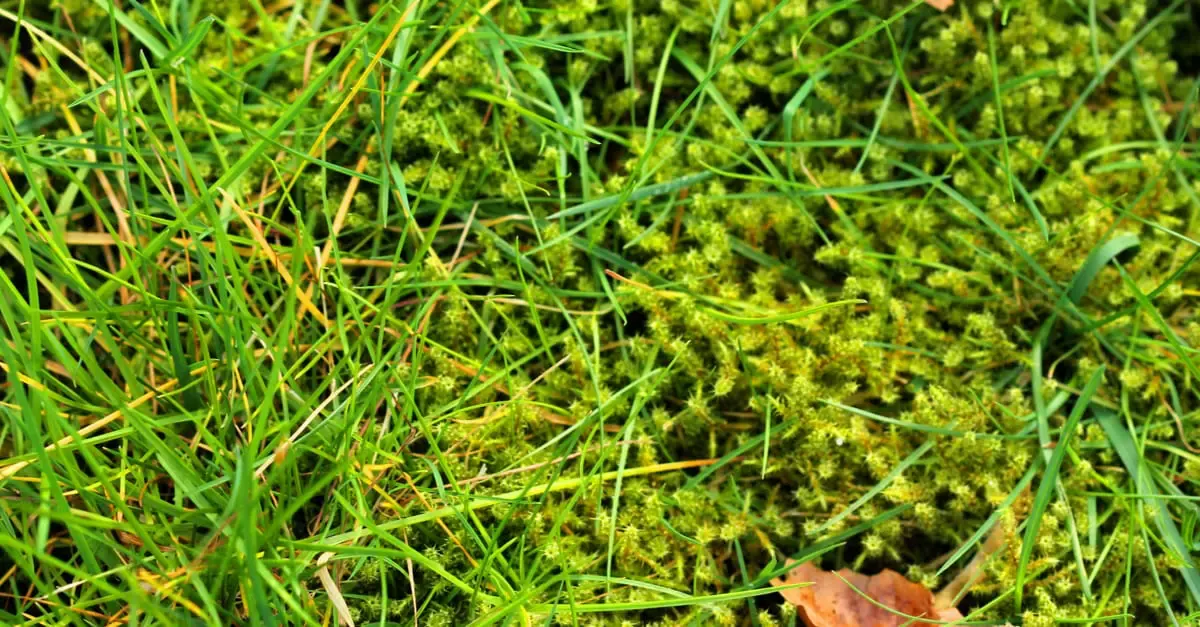Do you have moss on your lawn? If so, you’ve probably pulled your hair out trying to get rid of it.
Don’t worry, it’s not that hard to get rid of it. Read on to learn how to remove moss in lawn by yourself.
What is Moss?
First and foremost, what the heck is moss? It is a small, flowerless plant that grows in damp and shady locations.
It is very shallow-rooted and grows during the dark, damp days of fall and spring.
Moss doesn’t kill your grass, but if you’re seeing it, chances are your lawn is going to promote good grass growth. Moss fills in spaces that are bare in your lawn.
So if you kill the moss without addressing more significant problems, it will quickly grow back. Read on for conditions to avoid before you take steps to kill moss.
Conditions That Promote Moss Growth
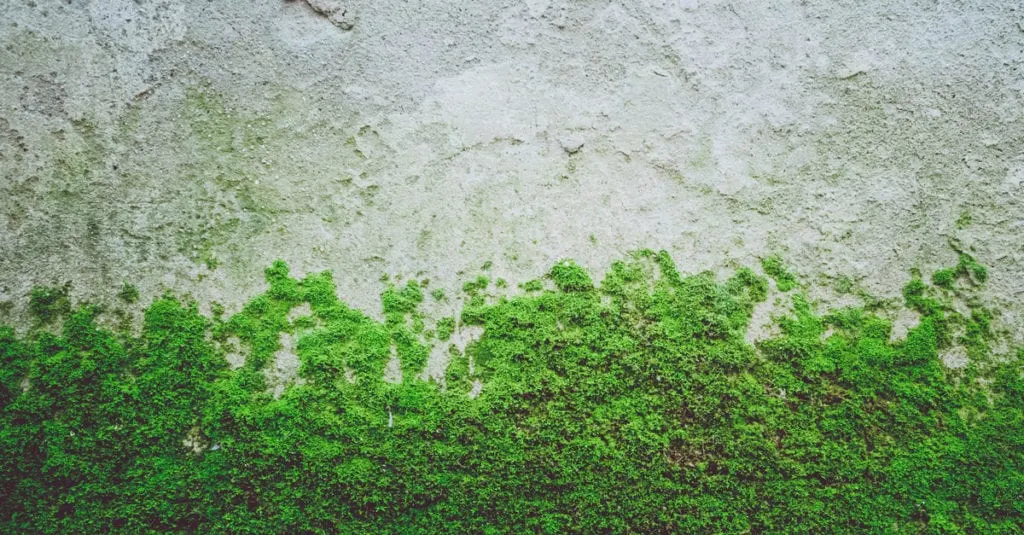
Fox Artbox/Shutterstock
If you use a moss killer to wipe out the moss on your lawn, you won’t necessarily see healthy grass growth.
First, try to eliminate or mitigate the following conditions that cause moss to thrive and grass to struggle:
- Lawn moss thrives in shady, damp areas. Grass, on the other hand, needs a good amount of sun.
- If your grass is struggling, you’ll see more moss growth. It doesn’t tend to grow where there is a lot of competition from grass.
- If there’s still water, moss will grow. It likes poorly-drained soil. So even if your lawn is sunny, if it is very moist, moss can grow again.
- Moss can thrive in soil that is low in nutrients. Well-fertilized lawns will have more grass competition and, therefore, less moss.
How to Discourage Moss Growth
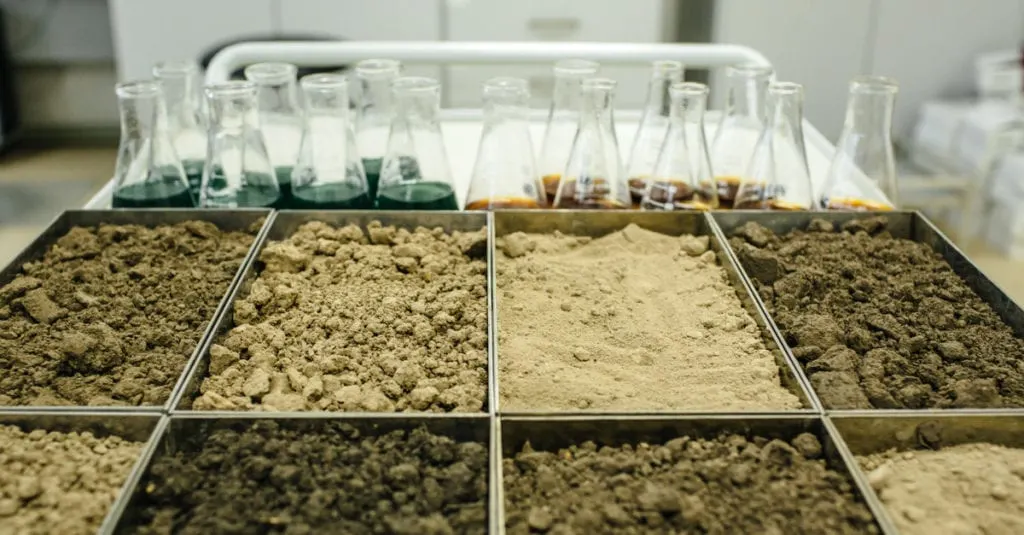
Vaks-Stock Agency/Shutterstock
Before you kill moss, you need to set up your grass for success with proper lawn care. While this may seem like a daunting task, it’s really not.
Trim Branches
You’ll want to reduce the amount of shade on your lawn by trimming low tree branches and pruning shrubs. After improving the sunlight, you’ll want to improve soil conditions.
First, test to see if your soil is too acidic. Turfgrass needs a soil pH level between 6 and 7. Use a soil test kit, which will determine the acidic soil level and tell you what kind of nutrients can help improve soil fertility.
Test Soil
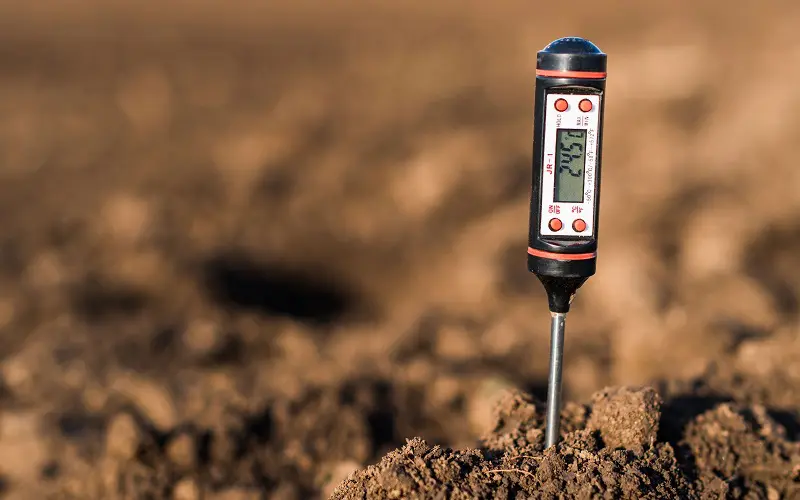
Fotokostic/Shutterstock
Moss will grow if the grass doesn’t have enough potassium, nitrogen, or phosphorous. The next thing you’ll want to do to improve soil conditions is aerate and dethatch your lawn.
Dethatching can also remove moss that is already attached. Aeration will help promote the movement of oxygen, nutrients, and water.
Modify Watering Habits
Finally, look for other stressors on your lawn. Are you watering too much or too little? Only water your yard when you need to supplement rainfall. Signs of drought include dull-colored or limp grass.
If your lawn is soggy, you’re probably overwatering. You’ll also want to look out for things like pet damage and mowing too low.
Killing And Removing Moss in Lawns
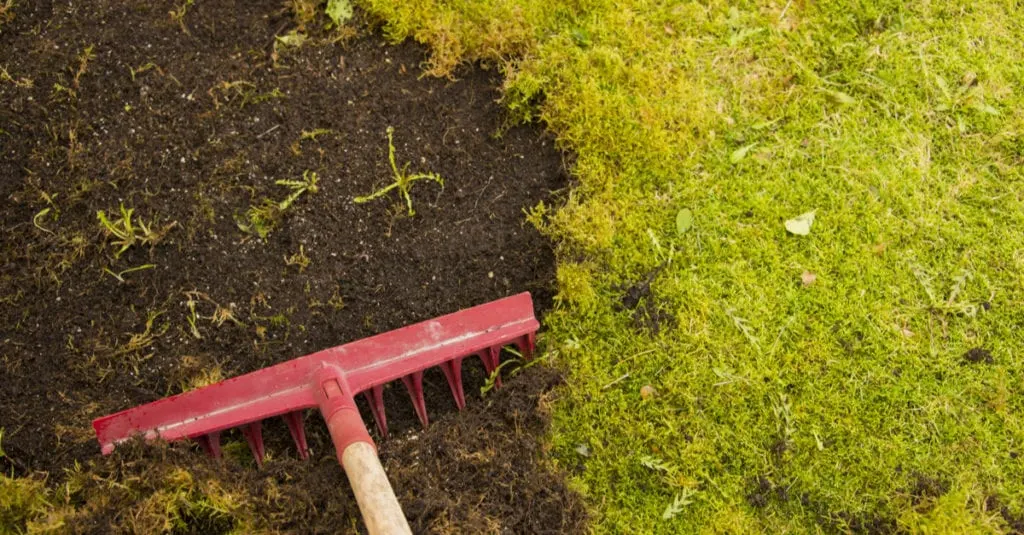
Gryt/Shutterstock
Once you’ve addressed issues like shady areas, growing conditions, and soil compaction, you can take steps to remove existing moss. This can be done by hand by raking.
Or, you can attach a dethatching blade to your mower. Don’t want to put in the sweaty labor? Use this handy hack: Combine two ounces of dish soap with one gallon of water in a garden hand sprayer.
Any brand, like Dawn, will do. Spray the solution on the patches of moss—make sure they are completely drenched. You will see the moss turn orange and brown in about a day, and it will dry out relatively quickly.
Loosely rake off the moss and dump it in an isolated space. You can also purchase various chemical mixtures to kill moss. For example, Scott’s Moss Control Granules for Lawns are made from ferrous sulfate monohydrate.
Other chemicals that will work include potassium, ammonium salts of fatty acids, ferric sulfate, anhydrous, and d-Limonene. Like dish soap, these chemicals act as drying agents to kill moss.
Note that you’ll need a 24-hour rain-free period for this application to work. Don’t use Round-Up or other vegetation killers. This will have next to no effect on moss, and it will kill the grass that is surviving on your lawn.
When to Treat It
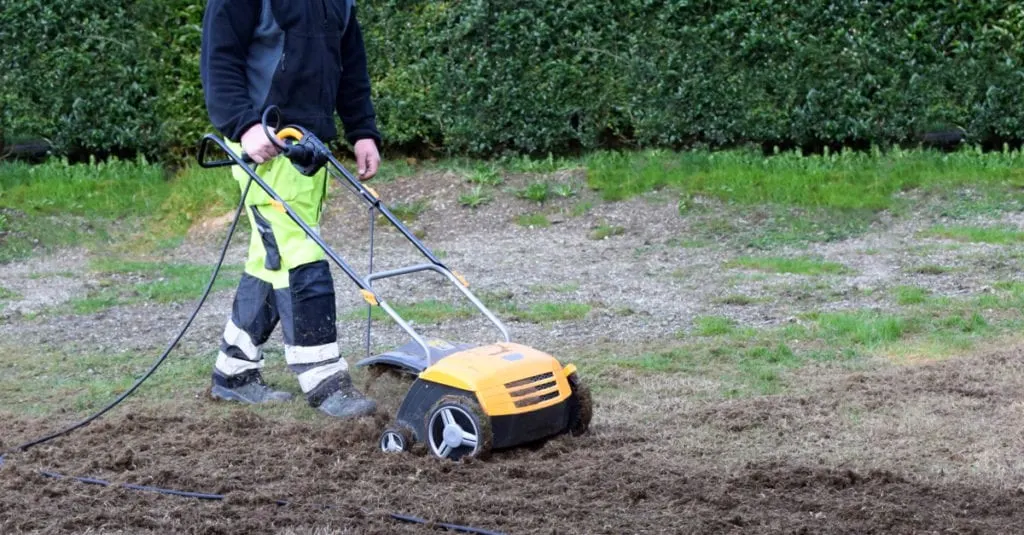
AntiD/Shutterstock
This process is best done in late summer or fall, just before reseeding your lawn. You’ll want to encourage grass growth in the now-bare moss spots to ensure the moss doesn’t grow back.
Once the bare spot is clear of moss, dead grass, or other debris, spread 2 to 3 inches of compost over the area. Smooth it with the back of a rake so that it’s even with neighboring soil.
Next, mix the grass seed with equal amounts of damp sand the day before you’re ready to plant. This helps jump-start the germination process. Spread the seed and cover it lightly with compost.
Water the area. Be gentle and careful not to wash the seeds in every direction. Water two to three times per day without over-watering until seeds germinate. You should see new growth soon!
Tip: Before you reseed your lawn, use your hose to wash away any chemicals that may be on your lawn. Pet or animal urine can also be an issue. Be sure to wash the area with water to remove any chemicals that may have seeped into the soil.
Get a Grassy, Moss-Free Lawn
Killing moss on a lawn is relatively easy. Since moss doesn’t have real roots, you can quickly pull it up with a rake. The issue is that if your yard isn’t properly cared for, the moss will grow right back.
Prevent this by promoting good drainage and lots of sunlight. You’ll also want to fertilize your lawn so that the soil is healthy enough for good grass growth.
Only then should you remove the moss and plant new grass. Lots of healthy grass competition will kick lawn moss to the curb.

